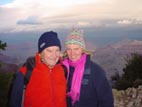I am considering promoting Baden-Wurttemberg to holiday makers as a rival destination to Tuscany and Provence - OK, it doesn’t roll off the tongue as easily but it really is very beautiful. We have now completed two long walks - around 15kms each and they were just delightful.
We set off Monday from our village apartment and walked through wheat, barley, sugar beet fields and vineyards to the Schloss (castle) at Weiler. The village was cleaning up after a party in the square - we could see the fireworks from our window on Saturday night. On Sunday after church in our nearest town, Sinsheim, we’d strolled along the stream that runs through the town and there was a farmers market, jazz band and some sort of wine-tasting event happening. We realize how few communal spaces are left in our suburbs in Canberra. These lovely spaces in so many European towns and villages are constantly used for formal and informal community get-togethers which must encourage the development of social capital, fast disappearing in most developed countries.
Tuesday we drove to Baden Baden, the sophisticated spa town After the obligatory coffee and people watching, we took off on ‘PanoramaWeg’ - the 40 kms circular walking path through the foothills around the town. We walked one section and then took the mountain railway several kms to the top of a mountain - absolutely spectacular views back over Baden Baden and surrounding towns. Then we completed our bit of the circuit. Lovely to be able to walk through a northern bit of the Black Forest.
Wednesday we set off for the Tubingen, home of Germany’s oldest university (1477) - the town population is 8,000 but there are 25,000 students - it’s vacation at the moment so it was hard to imagine what it would be like in term time - it wasn’t clear where they would all live. The town is beautiful cobbled alleys, stunning half timbered houses, a Schloss on the hill in whose kitchen in 1869, Friedrich Miescher isolated the substance we now know as DNA. As I was saying, we set off for Tubingen but on the way saw some interesting buildings off to one side and drove into Bebenhausen - it doesn’t get a mention in our guide book. The whole village is now a national monument surrounding a 12th century Cistercian Abbey. It was substantially restored for use by King Friedrich in the 19th century and was the home of King Wilhelm II and his wife in the 20th.
The one failing of Germany as a tourist destination over Tuscany and Provence has to do with food. Traditional fare is hearty in the extreme - we had an excellent meal of Wild Boar in Bonn but it isn’t the sort of food you would want to eat every day of the week. Outside the tourist areas and the university towns there doesn’t seem to be the café/wine-bar culture where you can have a drink and watch the world go by - nor is there the abundance of fresh food street markets although we have been to excellent ones in Tubingen and Bonn.
On Friday we take the train to Paris so the next BLOG will come from there.
